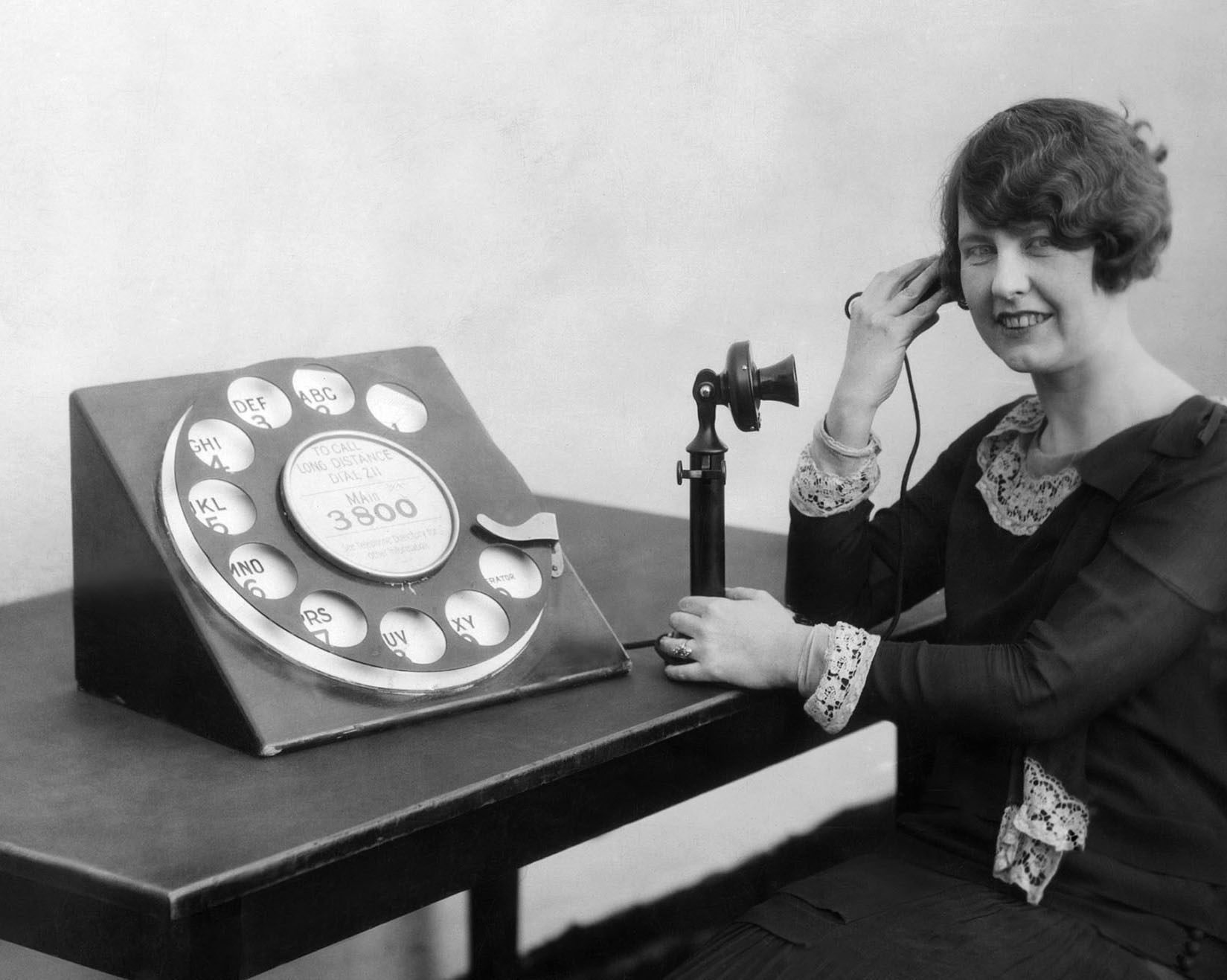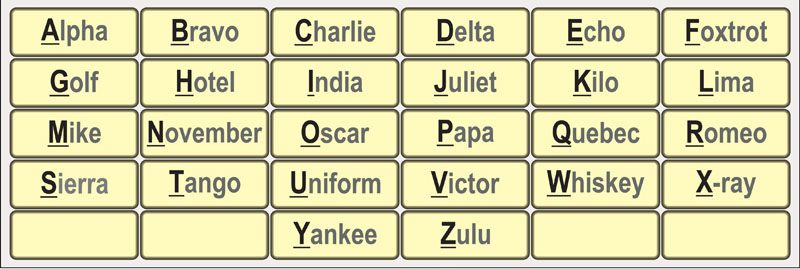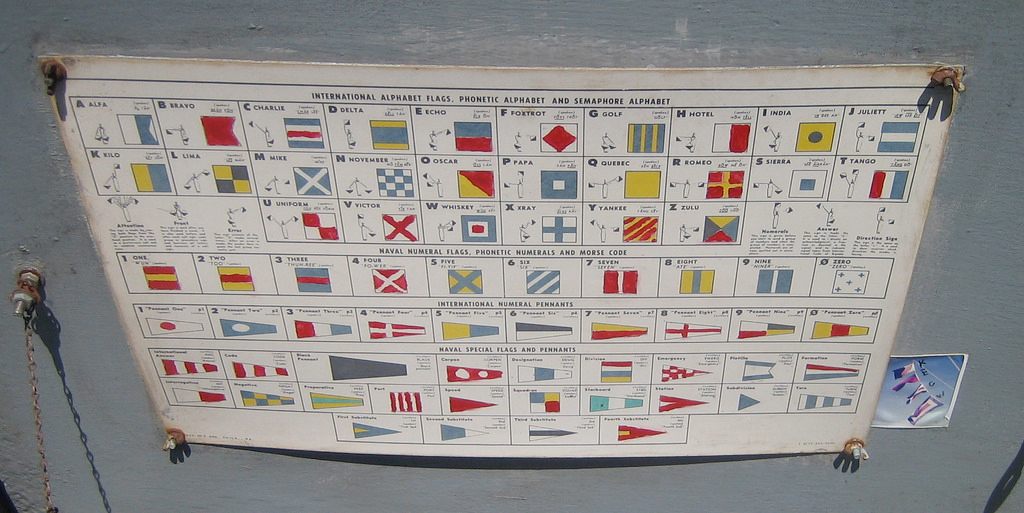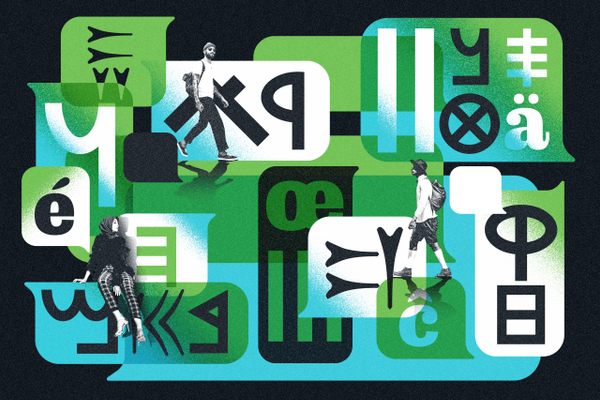The Strangely Perplexing Problem of Communicating Numbers Out Loud
Eight-six-seven-five-three-oh…something.

A phonetic number system would help with communicating numbers, particularly down a phone line. (Photo: Everett Historical/shutterstock.com)
It’s happened to everyone: You’re trying to spell something on the phone, with a lousy connection. “B,” you say, ‘with a ‘b’. “T?,” the other end of the phone replies. Repeat until someone guesses right.
Thank goodness, then, for a universally agreed-upon standard created after World War II to prevent confusion among international aircrews. The letter “b”, according to the International Radiotelephony Spelling Alphabet, or NATO phonetic alphabet, is always “bravo.” It is used worldwide whenever militaries, pilots or radio operators from different countries need to communicate, and internally within many countries as well.

But communicating numbers can also be a struggle over phones and walkie-talkies, and the need for clarity for both military and civilians remains great. The NATO phonetic alphabet has a solution, although it’s quite weak: their code words are the English names with slight pronunciation tweaks so three becomes “tree”, five becomes “fife”, and nine becomes “niner.” Reading numbers over the phone is still a hassle.
Why hasn’t a phonetic system for numbers caught on?

The NATO Phonetic Alphabet. (Photo: Fouad A. Saad/shutterstock.com)
It’s not for lack of trying. Brian Kelk, a retired computer officer from Cambridge, England, catalogues phonetic alphabets, and he’s found a few historical attempts at phonetic number systems. In the early 20th century, for instance, Swedes used women’s names in alphabetical order: Anna, Beda, Cecilia, Dora, Ebba, Fina, Greta, Hedda, Ida, Julia.
At their 1967 convention in Geneva, the International Telecommunication Union made an interesting effort by combining English numbers with prefixes adopted from the corresponding number in languages such as Spanish and Italian: Nadazero, Unaone, Bissotwo, Terrathree, Kartefour, Pantafive, Soxisix, Setteseven, Oktoeight, Novenine.
But, still, nothing like the NATO system. Part of the reason is that the problem is so well-known. Every language has a built-in fix of sorts, says mathematician Everett Howe, author of the Nearly Anacrophonic Phonetic Alphabet. “One thing you can always do is just repeat yourself enough times,” he says. Inevitably, that’s the method that most of us currently use.
Some foreign languages have informal aids to communicating numbers. Russian-speakers can use “collective numerals, equivalent to ‘foursome’” says Kelk. And French-speakers sometimes break long numbers into two-digit chunks instead of individual digits (think “nineteen eighty-four” instead of “one nine eight four”).

International Alphabet Flags, Phonetic Alphabet and Semaphore Alphabet on board the SS Lane Victory. (Photo: Michael R Perry/CC BY-ND 2.0)
In a designed system, though, the first important quality is distinguishability. The creators of the NATO alphabet made sure that every code word had distinct sounds. “Dad” would be a bad choice, because it’s easily mis-heard as “bad,” but the NATO code word “Delta” is hard to confuse with anything else.
Admittedly, numbers are already easier to distinguish than letters. “The names of most consonants are one of the sounds the letter makes, preceded or followed by a vowel,” says Howe. “Many letter names such as ‘b’ and ‘v’ and ‘c’ only differ by the initial consonant, which is hard to hear. But ‘one’ and ‘two’ and ‘three’ sound more different from each other.” Perhaps this, on its own, is enough to explain why phonetic number systems haven’t caught on.
But numbers do have problems. Two big issues are what information theorists call “error detection”—how does the receiving party check whether she heard correctly?—and “error correction”—if the receiving party knows she missed something, how does she figure out what it was?
With words, error correction is possible using “verbal distance” between different letters, and reasonable inferences about what the speaker might have intended. Your phone’s auto-correct does this all the time: it guesses that “rhe” was meant to be “the”, because “rhe” isn’t a word and because “r” is right next to “t” on the keyboard.
Numbers, however, are hard to error-correct. If Jenny tells you her phone number is “867530[something],” there’s no reasonable way to infer what the last digit should have been.
An ideal phonetic system is easy for a listener to interpret without any previous knowledge. If someone spells out “Alfa, Tango, Lima, Alfa, Sierra” you can follow what they mean, even if you haven’t memorized the NATO system yourself. The ITU number system (“Nadazero, Unaone, Bissotwo….”) is good in this way; the early Swedish system (“Anna, Beda, Cecilia…”) is not. “Those Swedish numbers would mystify outsiders,” says Kelk.
Help, though, is on the way. The best phonetic number system might be a new one recently invented by Howe:
Zero-sum,
One-off,
Two-faced,
Three-ring,
Four-square,
Five-fingered,
Six-pack,
Seven-up,
Eight-ball,
Nine-lives.
Howe’s system uses common, set phrases that begin with a number; the code words are all highly distinctive; the suffixes are uniquely applicable to their given number; and the system is easily interpretable without previous exposure. That said, one drawback is that the system isn’t intuitive for non-native English speakers who don’t know the phrases. By contrast, the NATO alphabet was specifically designed to work for speakers of many languages.

There is currently no established universal phonetic number system. (Photo: MyImages - Micha/shutterstock.com)
When designing the system, Howe had a number of priorities in mind. “You don’t want to say ‘Zero as in [something]’, because the words ‘as in’ take up time and bandwidth and don’t communicate a single thing. So I was trying to think of code words that actually began with the numbers themselves.” Beyond that, “you’re looking for code words that are uniquely matched with a single digit, so that if you miss the first syllable of what someone said you could figure out what they said from the second syllable.”
A final challenge, says Howe, was that no one “expects there to be code words for numbers,” so a system that didn’t explicitly include the number itself at the start of the code word might leave listeners “wondering why you started reciting avant-garde poetry when they asked you for your phone number.”
Unfortunately, Howe’s odds of adoption are low; Kelk thinks that if enough radio associations to endorse it then perhaps eventually it would filter up to relevant international bodies in some way—a big ‘if’. So until we can agree on a way to say numbers across the world’s wobbly radio, telephone and wifi lines, expect to keep repeating yourself.







Follow us on Twitter to get the latest on the world's hidden wonders.
Like us on Facebook to get the latest on the world's hidden wonders.
Follow us on Twitter Like us on Facebook